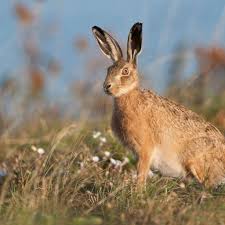Stamp: European Hare (Lepus europaeus) (Russia 2010)
European Hare (Lepus europaeus) (Russia 2010)
10 February (Russia ) within release 5th Definitive Issue of Russian Federation goes into circulation Stamp European Hare (Lepus europaeus) face value 0.10 Russian ruble
Stamp is horizontal format.
Perforation flaw: Single perforation hole missing. Dated 2008. Elliptical gaps on vertical sides.Also in the issue 5th Definitive Issue of Russian Federation:
- Stamp - Brown Bear (Ursus arctos) face value 25;
- Stamp - European Hare (Lepus europaeus) face value 0.15;
- Stamp - European Hare (Lepus europaeus) face value 0.25;
- Stamp - European Hare (Lepus europaeus) face value 0.15;
- Stamp - European Hare (Lepus europaeus) face value 0.10;
- Stamp - Moose (Alces alces) face value 3;
- Stamp - Moose (Alces alces) face value 3;
- Stamp - Moose (Alces alces) face value 4;
- Stamp - Moose (Alces alces) face value 5;
Stamp European Hare (Lepus europaeus) it reflects the thematic directions:
Animals are multicellular, eukaryotic organisms of the kingdom Animalia (also called Metazoa). All animals are motile, meaning they can move spontaneously and independently, at some point in their lives. Their body plan eventually becomes fixed as they develop, although some undergo a process of metamorphosis later on in their lives. All animals are heterotrophs: they must ingest other organisms or their products for sustenance.
Hares and jackrabbits are mammals belonging to the genus Lepus. They are herbivores, and live solitarily or in pairs. They nest in slight depressions called forms, and their young are able to fend for themselves shortly after birth. The genus includes the largest lagomorphs. Most are fast runners with long, powerful hind legs, and large ears to dissipate body heat. Hare species are native to Africa, Eurasia and North America. A hare less than one year old is called a "leveret". A group of hares is called a "husk", a "down", or a "drove".
Mammals are any vertebrates within the class Mammalia (/məˈmeɪli.ə/ from Latin mamma "breast"), a clade of endothermic amniotes distinguished from reptiles (including birds) by the possession of a neocortex (a region of the brain), hair, three middle ear bones and mammary glands. All female mammals nurse their young with milk, secreted from the mammary glands. Mammals include the largest animals on the planet, the great whales. The basic body type is a terrestrial quadruped, but some mammals are adapted for life at sea, in the air, in trees, underground or on two legs. The largest group of mammals, the placentals, have a placenta, which enables the feeding of the fetus during gestation. Mammals range in size from the 30–40 mm (1.2–1.6 in) bumblebee bat to the 30-meter (98 ft) blue whale. With the exception of the five species of monotreme (egg-laying mammals), all modern mammals give birth to live young. Most mammals, including the six most species-rich orders, belong to the placental group. The largest orders are the rodents, bats and Soricomorpha (shrews and allies). The next three biggest orders, depending on the biological classification scheme used, are the Primates (apes and monkeys), the Cetartiodactyla (whales and even-toed ungulates), and the Carnivora (cats, dogs, seals, and allies).



